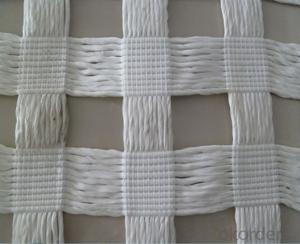Geotextile netting is a new material in the civil engineering and landscaping sphere, which has been increasingly noted due to its flexibility and efficiency. This article looks at geotextile netting, its applications, advantages, and love for professionals and hobbyists.
The Wonders of Geotextile Netting
When I first came across this material, I was intrigued by what it could do. It is more than just a substance; it’s an answer. From enhancing soil structures to supporting landscaping projects in several industries have employed it. The secret behind the success of geotextile netting is its distinctive properties – strength, durability and permeable.
Applications: A Diverse Palette
There are multiple areas where geotextile netting can be used hence making it interesting. In civil engineering, it plays major roles such as slope protection as well as erosion control and soil stabilization. It feels like a silent watchman who guards the integrity and stability of buildings that we often overlook. In gardening, one way to help plants grow or provide ground cover support is by using this creative tool that turns barren environments into lush green territories.
The Science Behind the Strength
This strength comes from how this fabric is made up together with its construction method. Consisting of high-tenacity polyester or polypropylene fibers that make it last throughout nature’s tests for millennia. Within yet without compromising the interwoven structure interacts excellently with soils while maintaining structural integrity unlike any other product on earth; besides being a result of meticulous engineering or profound knowledge about materials science.
Eco-Friendly and Sustainable
Being environmentally conscious person I have come to appreciate the effectiveness plus environmental friendliness of geotextiles nets (Lazzari 2020). By aiding in soil conservation and carbon sequestration through vegetation growth this material allows us onto something bigger than ourselves within our environment becoming symbiotic partners. It is a material that contributes back to the planet, making it sustainable for projects aimed at reducing their ecological footprint.
Installation: A Personal Journey
The first time I installed geotextile netting was a memorable experience. It was an interesting process. Accuracy and attention to each detail are required during this stage but nothing can compare with the feeling of having the net in place ready for use. This journey keeps you involved in the project on a more personal level.
The Future of Geotextile Netting
And there is a lot of hope for geotextile netting omming up ahead since many inventions and modifications are expected from continuous research and development. The field is extremely exciting as we witness the transformation of this material gradually becoming something different from what we knew before thus giving us various possibilities for shaping our lives.
In Conclusion
Beyond being just a mere textile, geotextiles nets illustrate man’s inventiveness in finding answers that meet his needs while at the same time being eco-friendly (Lazzari 2020). As I think about my journey through learning about geotextiles nets or working with them, I feel amazed at how far I have come. Such materials have given me greater knowledge within my professional life but those which touch me emotionally owing to their potential impact on environment and infrastructure came close to my heart.







